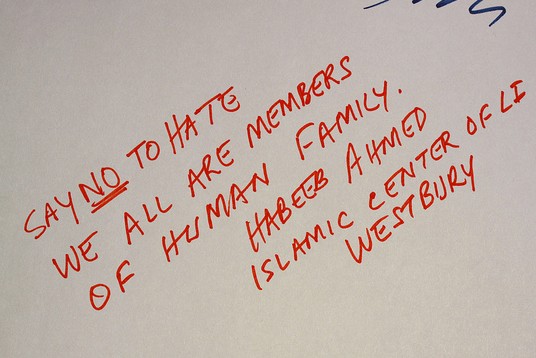
The Emmanuel AME shootings in Charleston, South Carolina have reignited public discussion of both terrorism and hate crimes. While the media often focuses on foreign religious extremism as a motivation for domestic attacks, data show more radicalization has taken place on the political far-right (independent of religion or race) than among Muslims in the United States. Since 9/11, only 25 recorded attacks have been committed by Muslim extremists, while 65 attacks were driven by right-wing extremists at home. So what’s the difference between terror and a hate crime? Is there a difference? Sociological research shows how public discourse and community differences can change the story.
Words like “terrorism” and “hate crime” change across social contexts. In the U.S., acts of violence perpetrated by minority populations are more likely to be defined as acts of terrorism, whereas “home-grown” offenders are likely to be dismissed as crazy, deranged, or evil—“bad apples” rather than people motivated by hate or politics. For hate-crimes, the pattern is reversed. Hate crimes that involve majority perpetrators, particularly in interracial incidents, are linked to higher seriousness ratings. In both cases, the social position of both perpetrator and victim changes how we interpret the violence.
- Austin T. Turk. 2004. “The Sociology of Terrorism.” Annual Review of Sociology 30:271-286.
- Phillip Jenkins. 2003. “Images of Terror: What We Can and Can’t Know about Terrorism.” Transaction Publishers.
- Christopher J. Lyons. 2008. “Individual Perceptions and the Social Construction of Hate Crimes: A Factorial Survey.” The Social Science Journal 45(1):107-131
American anti-black hate crimes are most prevalent in communities with a high concentration of white residents that are undergoing black in-migration. This suggests that majority members may try to “defend turf” from the perceived threat of “outsiders”. Compliance with hate crime law is less likely in high-percentage black communities, particularly in the southern U.S. Within these black communities, past lynchings (between 1882-1930) are associated with lower compliance with hate crime law in the present and a lower likelihood of prosecution of hate crime cases.
- Christopher J. Lyons. 2008. “Defending Turf: Racial Demographics and Hate Crime against Blacks and Whites.” Social Forces 87(1):357-385.
- Ryan D. King. 2007. “The Context of Minority Group Threat: Race, Institutions, and Complying with Hate Crime Law.” Law and Society Review 41(1): 189-224.
- Ryan D. King, Steven F. Messner, and Robert D. Baller. 2009. Contemporary Hate Crimes, Law Enforcement, and the Legacy of Racial Violence. American Sociological Review 74: 291-315.
For more on this issue, check out our other TROT! post, “How Hate Crimes Count.”

Comments